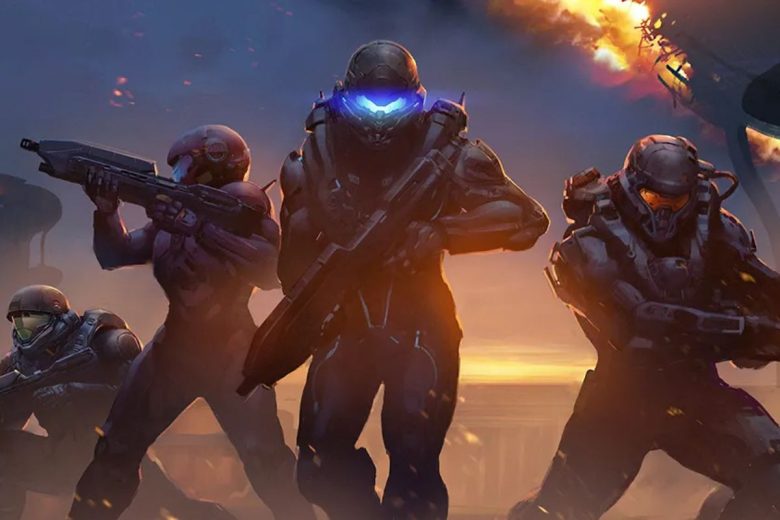For fans of science fiction shooters, Halo 5: Guardians has long been a title of interest—sometimes for its gameplay mechanics, other times for its story direction. Whether you’re a longtime Spartan loyalist or just jumping into the franchise, this entry stirred up a mix of hype, excitement, and strong opinions. Released in 2015 as part of the Halo universe’s continuing saga, Halo 5 gave fans plenty to talk about.
The game arrived during a key point in the Xbox One’s life cycle. Expectations were high, especially given the legacy of the series and the popularity of Master Chief. Players were curious to see where the story would go and how the gameplay would evolve. And while the community response was split on some fronts, there’s still a lot to unpack and appreciate in this chapter of the Halo story.
Quick Look at Halo 5’s Core Details
Halo 5: Guardians made waves when it launched, but not all of them were smooth. Here’s what’s worth remembering if you want the short version.
The game features:
- Dual storylines that split time between Master Chief and a new character, Spartan Locke
- Fast-paced, squad-based FPS action with updated movement mechanics
- No split-screen multiplayer, which disappointed longtime fans
- A strong focus on online modes, especially Warzone and Arena
- A campaign that expands the universe but left many with more questions than answers
Story and Characters: Two Heroes, One War
The story of Halo 5 centers on two perspectives. On one side, there’s Master Chief and his Blue Team, on the run and chasing after a signal that hints at something greater. On the other, there’s Spartan Locke, a new character sent to track Chief down. This dual structure was a big shift for fans used to following just the Chief.
It added a layer of tension to the story but also sparked debate. Many players expected a full campaign centered around Master Chief, and were surprised—or disappointed—by how much time was spent in Locke’s boots. While the back-and-forth perspective was ambitious, some felt the payoff didn’t quite land emotionally.
Still, the expanded cast, including characters like Vale, Tanaka, and Buck, helped bring more personality into the mix. Buck, voiced by Nathan Fillion, especially stood out with a sense of humor that gave the team a more human feel.
Gameplay and Mechanics: Speed Over Simplicity
One of the biggest changes in Halo 5 was the movement system. The game added clambering, ground pounds, thruster packs, and sprinting to create a faster pace. It gave players more ways to move and fight, which added energy to both campaign and multiplayer.
For some fans, this felt like a natural evolution. Others missed the slower, more methodical combat that earlier Halo entries offered. Still, there’s no doubt the mechanics were polished. Gunplay was tight, AI teammates could be directed with simple commands, and the overall experience leaned into action more than atmosphere.
The lack of couch co-op was a big loss, though. Halo had always been a game friends could play together on the same screen. Removing that feature made the experience feel more isolated for some.
Multiplayer: Arena and Warzone
Where Halo 5 truly shines is in its multiplayer modes. Arena mode delivered a competitive, skill-based experience that stripped things down to basics. Meanwhile, Warzone added large-scale chaos with objectives, AI enemies, and player-versus-player action in one mode.
Both modes saw solid support after launch, with new maps and adjustments keeping things fresh. Warzone especially felt like something new in the Halo world—huge, dynamic, and unpredictable.
Matchmaking was mostly smooth, and the weapons sandbox was balanced well. REQ packs were introduced as a form of progression and unlockables, though not everyone liked the system. It added a layer of randomness that felt out of step with Halo’s usual design.
Visuals and Sound Design
Graphically, Halo 5 looked sharp on Xbox One. The lighting effects, environments, and character models were impressive, especially during high-energy battles. There were moments that felt genuinely cinematic, especially during cutscenes.
The sound design stood out too. From the hum of plasma rifles to the deep growl of a Warthog engine, everything had weight and presence. The soundtrack, while different from the classic Halo scores by Martin O’Donnell, still managed to strike emotional tones that fit the action.
Voice acting was solid across the board, with strong performances bringing both Chief and Locke’s stories to life. The dynamic between squad members also helped humanize the sci-fi setting.
Where It Stands in the Franchise
Halo 5: Guardians isn’t without flaws, but it did push the franchise in new directions. It experimented with story structure, changed the pace of gameplay, and gave players new ways to engage online. Whether those choices worked or not depends on who you ask.
For some fans, it’s a misstep—a game that lost touch with Halo’s roots. For others, it’s a bold entry that showed how the series could grow. Regardless of where you land, there’s no doubt it stirred strong reactions and left players wondering what would happen next.
The game also set the stage for Halo Infinite, which aimed to bring together old-school charm with modern updates. Without the steps taken in Halo 5, that next chapter wouldn’t have had the same sense of urgency or purpose.
Halo 5: Guardians may not have hit every target, but it’s still a key part of the franchise’s history. It took risks, tried new things, and gave us moments worth remembering. Whether you loved it or left it behind, the game added fuel to the Halo conversation—and that alone makes it worth looking back on.
